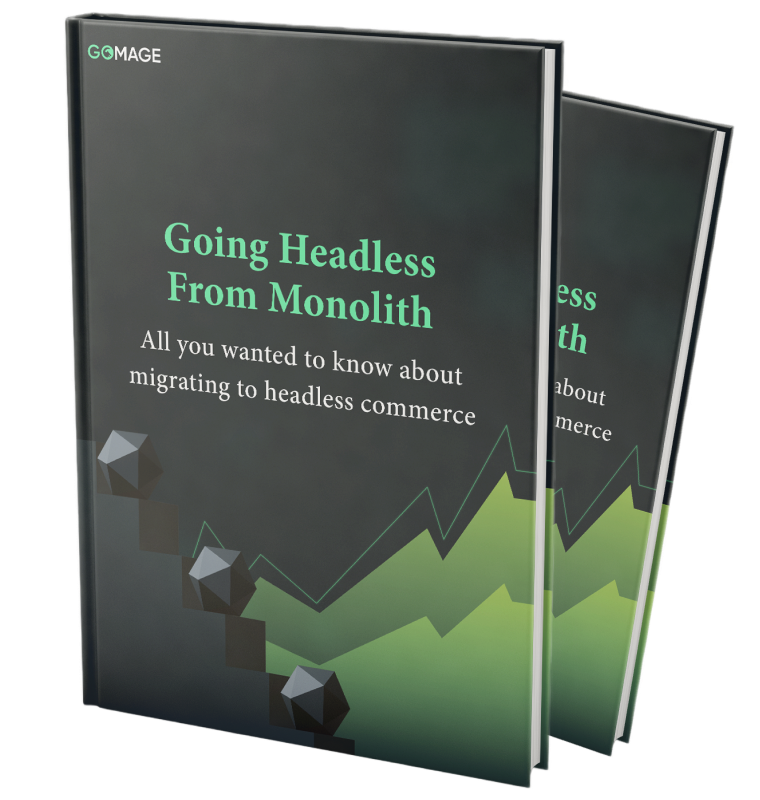The dynamic nature of eCommerce means businesses must regularly evaluate their platform choices as their needs evolve. While Magento is known for its comprehensive features and customization options, Shopify is gaining traction for its scalability, user-friendliness, and other competitive advantages.
In this article, we will explore why many eCommerce stores choose to migrate from Magento to Shopify and will help you decide if Shopify is the right choice for your business.
Reasons for Migrating Magento to Shopify
If you are satisfied with the Magento platform, there is no surprise. It’s an excellent solution for eCommerce stores of different sizes and niches. Yet, it’s still a great idea to check the perks other platforms, like Shopify, offer their customers. Exploring these benefits could reveal that it’s time to migrate Magento to Shopify.
Shopify is an investment in a brand’s future, providing long-term value through best-in-class built-in eCommerce functionalities that expand businesses across channels and regions. It offers the agility to capitalize on market trends and experiment with new features quickly. Brands that decided to migrate from Magento to Shopify can take advantage of these benefits to enhance their online presence and operational efficiency.
-
Higher ROI, Lower TCO
Strong, consistent financial performance, coupled with substantial investments in product innovation and development, position Shopify as a leader in eCommerce and a trusted long-term partner for business owners.
Brands migrating Magento to Shopify tend to reduce their total cost of ownership (TCO) by 38% while increasing revenue through higher conversion rates and innovative capabilities that enable them to grow the business faster.
According to the checkout conversion study, Shopify stores convert 5% more on average than Adobe Commerce stores.
Financial profit is the strongest benefit of using Shopify, but if that is still not enough for you to consider Shopify development services, read on to learn about other benefits this platform offers.
-
Security and Reliability
When comparing Shopify and Magento in terms of security, Shopify clearly stands out. Shopify includes a built-in fraud analysis feature, provides SSL certificates, and is PCI-DSS compliant, ensuring customers’ credit card information is handled securely. Additionally, Shopify adheres to GDPR regulations. In contrast, Magento places the responsibility for security on merchants, requiring them to install SSL certificates and achieve PCI-DSS compliance manually. Only businesses on Adobe Commerce Cloud can enjoy the benefits of PCI-DSS compliance out of the box.
Brands that chose Magento migration to Shopify usually point out this platform’s benefit, as it saves them a lot of time, money, and nerve cells.
-
Improved Agility and Usability
Shopify’s agility and usability provide significant operational leverage and flexibility by eliminating technical debt, which allows both tech teams and brand owners to focus on business goals. Its SaaS model, extensive features ecosystem, and intuitive interface let non-technical users easily manage and customize their stores. At the same time, automatic updates and built-in SEO tools reduce the technical complexities. It contrasts with Magento, which often requires costly technical maintenance and change management support.
-
Web Hosting & Subdomain
Shopify provides significant web hosting and subdomain services, streamlining the setup process for eCommerce businesses. Unlike Magento, Shopify includes web hosting in its monthly subscription, eliminating the need for platform users to manually find and pay for separate hosting services. It also provides a free subdomain (e.g., .myshopify.com), which is ideal for merchants not ready to set up a custom domain name. This makes it easy for businesses that decide to migrate Magento to Shopify to launch and manage their online stores without any technical expertise.

-
Easy Setup & User-friendly Interface
Easiness is probably one of Shopify’s synonyms, as it is built to simplify and speed up the setup of an Commerce store. While Shopify guides users through this process step-by-step with an intuitive interface, Magento requires technical assistance from the early stages of creating an online store.
Shopify’s famous drag-and-drop feature enables users to easily move elements on their pages and tweak backend features through simple menus. In addition, the platform has high-quality and professional themes that integrate seamlessly with in-store features, creating an attractive and functional storefront. This user-centric approach, combined with integrated web hosting and a 24/7 support team, lets business owners set up their stores independently.
-
Themes & Integrations
Shopify offers diverse contemporary themes, ideal for versatile eCommerce needs. All 70+ themes, including 12 free ones, feature responsive designs, ensuring a smooth user experience across all devices. Meanwhile, Magento has only 11 themes, and all of them require payment. Shopify’s big premium theme selection with advanced functionalities, like mega menus, custom page templates, and product reviews, allows merchants to swiftly set up a fully functional online store.
Furthermore, Shopify has over 6,000 apps in its App Store, providing extensive and easy-to-use customization capabilities. This contrasts with Magento’s marketplace, which offers only about 4,000 extensions that often require careful selection to avoid compatibility issues and security risks.
Shopify Plus Certified App Program has over 90 certified apps designed to address complex eCommerce challenges. These apps cover a range of functions, from automated email marketing platforms to AI-powered helpdesk solutions, necessary for businesses that want to scale. Many of them include a free trial or free plan.
Even if these themes and apps are not enough, agencies like GoMage and Craftberry can always help with custom theme and app development tailored to your business needs.

-
No-Code Builder & CMS
Shopify’s no-code builder and integrated CMS make it easy for anyone to create and manage an online store without coding skills. The platform features a built-in CMS, allowing online retailers to manage a blog with a simple editor for headers, typeface changes, links, and images. At the same time, on Magento, you’ll probably need third-party extensions to run this functionality on the same level.
While Shopify provides HTML and CSS editing, it’s a no-code builder, so you don’t need knowledge of coding to use it. Handy drag-and-drop functionality, access to over 6,000 apps, and a big team of Shopify Experts enable merchants to quickly set up and customize their stores. On Magento, it’s almost impossible for users without coding skills, professional help, or third-party extension to build on the platform.
This is one of the top reasons why online retailers with no advanced technical skills migrate from Magento to Shopify.
-
Easy Customizations
The Shopify customization process is easy and comfortable for online stores of any size. The platform’s theme editor allows merchants to effortlessly customize fonts, colors, images, layouts, and more without technical background. Shopify’s user-friendly interface, variety of themes, and over 6,000 apps in the Shopify App Store outpower Magento, which often requires third-party extensions for similar customizations.
-
Higher Affordability
When comparing Shopify and Magento, Shopify is generally the more affordable option. It has lower transaction fees for payment gateways and reduces the need for extensive web development work, which is usually pretty pricey. Additionally, Shopify provides web hosting, free themes, free dropshipping options, and many more. Although Magento has no monthly subscription fee, the overall cost to set up and maintain a store is higher.
It’s important to note transaction fees. While Magento doesn’t charge transaction fees, you’ll incur incremental costs with payment providers. For instance, Stripe charges 2.9% plus 30¢ per online transaction and 2.7% plus 5¢ for in-person payments. On the other hand, Shopify Payments doesn’t charge transaction fees on any plan, making it a more cost-effective solution for many businesses.
-
Suitable for All Businesses
Shopify is designed for businesses of all types and sizes. For businesses planning to migrate from Magento to Shopify, the platform provides the essential tools and flexibility to support businesses at any stage, from startups to large-scale enterprises.
For small businesses and new entrepreneurs, Shopify offers an easy-to-use platform with intuitive tools, affordable pricing plans, and essential eCommerce functionalities such as secure payment gateways, shipping integrations, and inventory management. This allows businesses to launch quickly without significant upfront costs or technical expertise.
For larger enterprises, Shopify Plus has advanced features and customization options. It supports high-volume sales, complex product catalogs, and multichannel selling. Businesses can leverage Shopify’s robust APIs and a wide range of third-party apps to extend functionality and integrate with existing systems. Shopify Plus, also, offers dedicated support and more control over the checkout experience, making it a powerful solution for large-scale operations.
Overall, Shopify’s flexibility, ease of use, and comprehensive features make it an ideal choice for businesses at any growth stage. Conversely, Adobe focuses on Adobe Commerce development, which is more suited for enterprise businesses. While small businesses can use Magento, it might not be the best fit due to its relatively high development costs. Small businesses without in-house developers might find it challenging to set up and manage everything independently.
Migrate Magento to Shopify: Debunking Key Myths
There are several misconceptions surrounding Shopify that sometimes make online retailers doubt the practicality of migrating from Magento to Shopify. We’ve heard of these myths and we are ready to debunk them.
Shopify is Suitable for SMBs
One of the most popular myths about Shopify is that it’s only suitable for small to medium-sized businesses (SMBs). However, this misconception overlooks the robust capabilities of Shopify Plus, which is designed for enterprise-level operations. Shopify Plus supports large-scale, high-growth brands, providing the infrastructure for extensive product catalogs and high-volume sales. Over 1,000 brands have switched from Magento to Shopify, including high-profile names like Fenty Beauty, Kylie Cosmetics, and Skims. Let’s have a look at some of the recent case studies.
Spanx
Spanx, a prominent brand specializing in shapewear and apparel, recently underwent a Magento migration to Shopify to streamline site management and increase revenue. Since the switch, they have experienced a 10% increase in conversion rate and a 30% boost in efficiency in managing content and products. Additionally, customer experience technical issues were reduced by 50%, demonstrating Shopify’s effectiveness for large-scale operations.
Molekule
Molekule, a leader in premium air purifiers, recently underwent a Magento migration to Shopify. It resulted in significant improvements, including a 75% increase in device conversion rate, a 7% growth in net subscribers, and a 10% rise in traffic. The replatforming reduced operational complexities, allowing Molekule to focus more on growth and less on technical challenges.
Shopify Isn’t Customizable
The myth that Shopify lacks flexibility is often rooted in outdated knowledge of its capabilities despite significant enhancements made in recent years. Most customizations businesses seek can be done through the platform’s features, such as CSS, front-end and backend APIs, SDKs, integrations with enterprise solutions, meta fields, meta objects, and functions. Online retailers must clearly define their customization requirements to determine Shopify’s suitability (or any other platform).
Shopify Lacks B2B Functionality
Adobe Commerce’s B2B product is robust but hasn’t seen much innovation lately – aside from 2 released in 2023, there was nothing since 2021. In contrast, Shopify has consistently improved its B2B features across its last three updates, showing ongoing investment. While Shopify’s B2B capabilities may not yet match Adobe’s, they are rapidly closing that gap. When considering any missing features, it’s important to weigh the extra time, money, and resources needed to maintain Adobe, both for direct-to-consumer and B2B operations, and question whether these justify its higher cost.
Your Options for Magento Migration to Shopify
So, you may have decided to migrate from Magento to Shopify. But which one should you choose: Shopify or Shopify Plus? The answer is pretty straightforward:
If a business is currently using Magento 1 or Magento 2 and does not require B2B capabilities, Shopify is an excellent fit.
Shopify Plus is recommended if a business is on Adobe Commerce and requires robust B2B functionalities. Shopify Plus offers advanced features tailored to B2B needs, making it suitable for scaling businesses.
If you still have questions about migrating Magento to Shopify, please contact us for a consultation!






